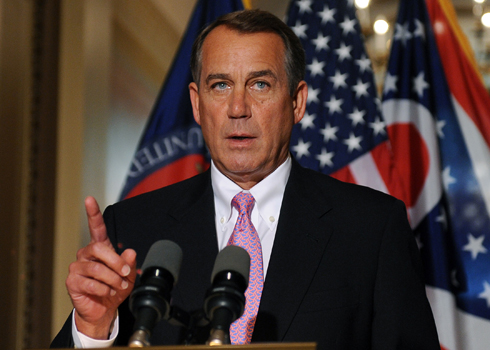House Republicans and Senate Democrats have posted details of the bipartisan spending agreement that staved off a shutdown, providing a first look at where the $39.9 billion of cuts come from on a program by program basis.
Republican priorities can be seen throughout the agreement, with reduced funding for enforcing environmental regulation, scientific research, health care, and education all leaping out.
One of the hardest hit institutions is the Environmental Protection Agency, whose power Republicans have sought to curtail in recent years through a variety of legislative means. The agency will receive $1.6 billion less in funding than current levels, a 16 percent drop, including a $49 million reduction in climate change programs and $149 million cut to the Land and Water Conservation Fund. In a press release, Senate Appropriation Committee Democrats noted that the EPA cuts, while tough, were nearly $1.6 billion less than Republicans’ original proposal. The National Oceanic and Atmospheric Administration also saw a $142 million reduction in funding and is prohibited from creating a Climate Service.
In addition to programs protecting the environment, programs aimed at boosting energy efficiency for power plants and transportation also were major targets. Energy efficiency and renewable energy were cut by $438 million while fossil energy R&D was reduced by $226 million and nuclear energy funding was cut by $56 million. Funding for high speed rail, all $2.9 billion of it [note: see update below], was zeroed out entirely. In the wake of the Japan disaster, energy security appeared to catch a reprieve — the National Nuclear Security Administration actually saw an increase of $697 million in funding.
Health care funding was a heavy target for the GOP, who secured just over $1 billion in cuts to programs preventing the spread of HIV/AIDS and other diseases, $600 million cuts to community health care centers, and $78 million to research on health care costs. Funding for health co-ops created under the Democrats’ health care law was zeroed out.
On education, Pell Grant awards were preserved, a top priority for the White House, but they were altered to prohibit students from drawing from two at the same time. Democrats also avoided cuts to Head Start and protected AmeriCorps, which was slated to be eliminated under the original GOP proposal. Nonetheless, spending on education and other social programs made up a large portion of cuts — Labor, Health, Education and related agencies were slashed by $5.5 billion with 55 programs eliminated.
Science research, which President Obama has touted as crucial to American competitiveness, was on the chopping block: National Science Foundation saw a $43 million cut in its research funding from its current levels but a major $444 million cut from the President’s initial request.
Defense was not cut from current levels, instead increasing by $5 billion. FEMA first responder funding was cut by $786 million. Contributions to the U.N. and international organizations were cut by $377 million.
The bill also removes four positions that were popularly labeled as “czars” by Republicans, including the “car czar,” “climate czar,” “health care czar,” and “housing czar,” a major issue for conservative activists since 2009.
To view the full slate of cuts, program by program, check out this chart by the House GOP Appropriations Committee.
Update: A spokesman for the Federal Railroad Association e-mailed TPM to clarify that high speed rail was cut by less than $2.9 billion and some money that had been appropriated in the last year will carry over:
“In FY 2010, President Obama requested $1 billion for High-Speed Intercity Passenger Rail and Congress appropriated $2.5 billion, $1.5 billion above and beyond the administration’s request. This six-month CR contains $0 for high-speed rail in 2011 — whereas the President’s request was $1 billion — and rescinds $400 million of the funding appropriated for the program in FY 2010, for a total cut of $1.4 billion.
As a result, there is now $2 billion in high-speed rail funding available, down from the $2.4 billion previously available (due to the $400 million FY10 rescission). Last week, 24 states, the District of Columbia and Amtrak submitted 98 applications with funding requests totaling more than $10 billion. ”









